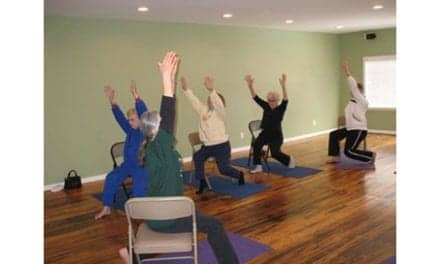The benefits of a proactive, comprehensive work injury management and prevention program are substantial to all parties. COVID-19 hasn’t changed that. During this pandemic a community’s employers benefit from a partner who can assist them anywhere along the spectrum of safety to disability management. The rehab provider is that partner. And, as workers and their families get to know and trust the rehab provider, they are more likely to refer family members and friends.
As a community resource, the rehab provider can and should be seen as objective and helpful in the mission of helping employers hire and retain a productive workforce that is kept safe and healthy. To achieve that goal, employers have a new challenge in meeting the rules of engagement brought about by COVID-19. In response to that challenge, it becomes increasingly important that the providers of these services include rehab professionals well-versed in how injury and illness can impact an individual’s ability to function at work.

Using the Functional Capacity Evaluation to Prevent and Manage Injuries
Even during the COVID-19 pandemic the functional capacity evaluation (FCE) is a service that continues to be sought by physicians, insurers, and employers. The service, however, must be recognized for how it is utilized in the current environment. In most cases the FCE is engaged at the “end stage,” which represents missed opportunities to have made a difference during an individual’s recovery period. In some cases engaging the FCE at the end stage may be the only realistic choice, especially when an injury, illness, and/or the challenges presented during the recovery period make earlier use of the FCE inappropriate or simply not possible. In the majority of situations, however, this is not the case. When an FCE is referred and provided, the professionals should be seeking to understand what was missing and what could have been done earlier in the course of management to have avoided arriving at the need for the FCE.
Today, COVID-19’s longer-term impact on workers ranges from mild to severe. The full extent of the impact of this virus over the long term is not yet known. The journal Science (Couzin-Frankel 2020) reports that “the list of lingering maladies from COVID-19 is longer and more varied than most doctors could have imagined.1 Ongoing problems include fatigue, a racing heartbeat, shortness of breath, achy joints, foggy thinking, a persistent loss of sense of smell, and damage to the heart, lungs, kidneys, and brain.”1
While the long-term outlook of COVID-19 on systemic health is still cloudy what remains clear is that employers must still be vigilant about how they analyze, evaluate, and document work in settings newly changed by the pandemic.
Job Analysis and Documentation
The most critical step for a work injury management and prevention system to succeed is development of accurate job function and physical demands documents. This removes doubt and negativity by focusing all parties on agreed-upon evidence relating to a job. All job analysis/job description information currently in use by employers needs to be reviewed and updated based on how the pandemic has impacted the job. Are workers required to wear masks or other PPE related to the pandemic? In which job situations? Who is exempt? All aspects of what a provider can offer flow from an accurate job function description, including ergonomic opportunities, education, rehabilitation (traditional and work hardening/conditioning), and matching workers to jobs across the spectrum of point of hire to separation from employment.
Post-Offer and Return-to-Work Testing
Several important things must be considered before including testing of any kind in employment and return-to-work decision-making. When employers use such testing they further commit to their responsibility to keep employees safe and not discriminate in their decision-making when hiring or returning an individual to work. Any method chosen to test workers to determine if they are physically suited to the job, or capable of returning to their job post injury or illness, must show a clear and indisputable relationship to the job in order to withstand such scrutiny.
In many if not most work environments, workers are currently required by state mandates to wear a face mask. Workers in contact with people often must use higher levels of personal protective equipment (PPE) such as N-95 masks, face shields, goggles and protective clothing. The PPE is to protect workers but has the potential to increase risk as well. Issues related to comfortable breathing, communication, blood pressure, heart rate, blood oxygen levels, and even loose clothing are worthy of mention. For now, it seems logical that PPE should be incorporated where indicated during any type of functional testing intended for return to work recommendations. It remains to be seen whether this is a short-term or long-term issue.
Worker Input
Case law has frequently demonstrated that a worker’s input about what a job requires is given significant merit. It takes an employer’s written, validated job description, including physical demands, to challenge an employee’s subjective statement, because employees are generally considered—by the Occupational Safety and Health Administration (OSHA) and the Equal Employment Opportunity Commission (EEOC)—to be experts regarding the work they perform. Therefore, in job analysis and test design, the worker’s involvement in validating the accuracy of any description of, or testing of the physical nature of a job is critical. When job changes occur testing must be monitored and upgraded Policies and procedures must be in place to assure this happens and the supporting documentation must be kept current. In this COVID-19 era it is important that employers update job analysis information and job descriptions to include any additional PPE requirements.
Due to this additional commitment, some employers will decide to simply avoid testing. The result oftentimes will be that they pay a higher price in work injury costs as well as see increases in employee turnover and litigation.
Clear Picture the Job
Employers hire employees to do jobs—which have physical demand requirements. Employers are often scrutinized by agencies such as OSHA and the EEOC, and the physical demands associated with a job can certainly be a reason for such scrutiny. The physical demands definitions are well-known to professionals in human resources, safety, and governing agencies. The kinesiophysical method is strongly based on job functions and directly tests associated physical demands. As such, it is a content valid method and therefore meets the EEOC’s requirements. Kinesiophysical testing is well-researched and published in peer-reviewed journals and has shown to have excellent inter-rater and intra-rater reliability. It is often given high marks in outcomes reporting as having a positive and proactive influence.
The Job Function Matching (JFM) method tests only the physical demands clearly required with a particular job—such as lifting, carrying, walking, climbing, etc. It is not a generic test asking the individual to perform potentially more than the job would require them to do. The physical demands and associated tests are very recognizable in their relationship to the job, and these physical demands are listed in documentation that has legal credibility—such as job function descriptions and US Department of Labor definitions of work. This documentation shows the direct relationship to the physical demands of a job and, as such, doesn’t require much interpretation by those who might review it. That may be a key reason why properly prepared providers and employer clients report that they don’t spend as much time in deposition or court proceedings. Also, it is easy for experienced workers to take the JFM test and have confidence in the results, because it clearly is representative of what the job requires them to do.
The Job Function Matching approach requires that both Job Function Descriptions and Job Functions Tests be validated by experienced employees as well as management representatives. Other methods of testing that rely more on strength and flexibility are often not recognizable as work-related—the relationship of muscle performance to work-related physical demands is an inferred one. Because of this, employers and providers are likely called to deposition or court to “explain” this association when questions or challenges arise. This can result in increased cost of time spent and legal fees.
Worker Rehabilitation
When rehab providers have information that clearly shows the functional and physical gaps that are present for their patient/client, it is not difficult to incorporate these gaps into goal setting that addresses the worker’s ability to perform their job. Since traditionally this information is absent or vague, return to work is often minimally addressed, if at all, until a work hardening or work conditioning referral is made. This is costly to all parties, and further signifies the need for all parties to actively seek objective job function and physical demands information as soon as it is evident that an individual’s ability to work is impacted.
A Better Way to Manage Injury and Recovery
A Job Function Matching system, by utilizing the kinesiophysical method, addresses methods to prevent injuries and keep recovering workers on the job, as well as methods to manage disabled workers, with strategies including work modifications (whether temporary or permanent) that can significantly reduce days away from work or restricted work days. The JFM system can help the employer manage “stay at work” efforts, and this can be done early and on an ongoing basis throughout a case. This results in substantial cost savings, more positive relationships between stakeholders, and earns the provider recognition as a community partner in developing and maintaining a healthy workforce. RM
Virginia “Ginnie” Halling, PT, is CEO of DSI Work Solutions. For more information, contact [email protected].
Reference
- Couzin-Frankel J. (2020, July 31). From ‘brain fog’ to heart damage, COVID-19’s lingering problems alarm scientists. Retrieved from https://www.sciencemag.org/news/2020/07/brain-fog-heart-damage-covid-19-s-lingering-problems-alarm-scientists.





Rehabilitation begins by helping an offender find their true identity. The tools trained counselors now have at their disposal for this identification process are readily available: aptitude and IQ tests; personality and character tests; astrological and numerological charts and reports; literacy tests. Poor readers are non readers and have a lifetime social handicap until they want to read well. Probations should continue until literacy is achieved.
In order to be able to properly treat a patient with drug addiction, physicians and counselors must be able to examine the specific aspects, conditions and situations that the drug addict is subject to in order to determine which drug rehabilitation method would be applicable. It is also important to note that the instances of drug addiction are affecting younger and younger members of the society. This is a disturbing fact that drug addiction centers are well aware of.
Thanks for you comment, Rowena. This article is focused on physical rehabilitation after work injury, however, so your point might be outside its scope.
—Frank